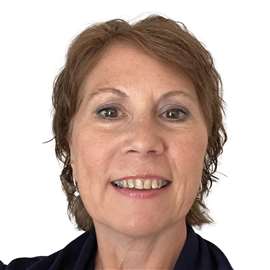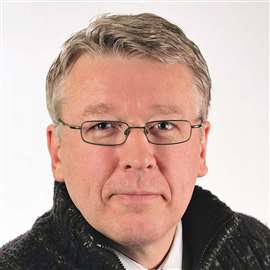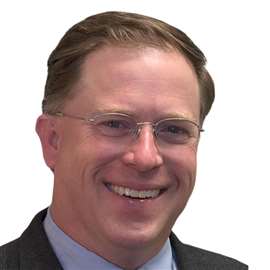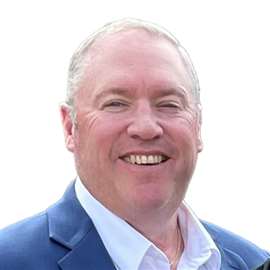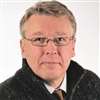Caterpillar proposes ‘distributed generation’ for guaranteed power
29 May 2025
Julian Buckley visited Cat’s MDLC in Spain to find out how the company’s distributed power program can benefit customers
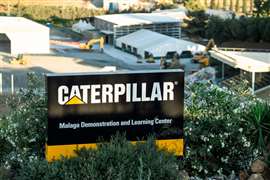 Entrance to the Caterpillar Málaga Demonstration and Learning Center (Photo: All photos supplied by Caterpillar)
Entrance to the Caterpillar Málaga Demonstration and Learning Center (Photo: All photos supplied by Caterpillar)
Back in 1971, when Caterpillar opened its Málaga Demonstration and Learning Center (MDLC) in the hills overlooking Spain’s Costa del Sol, there was nothing else nearby. Since then, the location has been gradually surrounded by a series of commercial centres and industrial parks.
That has not stopped the global machine and power OEM from expanding the location. In 2024 the 260-acre site hosted more than 330 events attended by about 7,000 visitors, comprising Cat employees, dealers, customers and sometimes the occasional journalist.
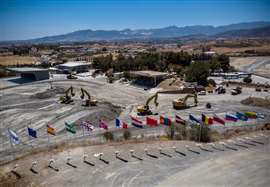 Equipment Demonstration Area at Caterpillar’s MDLC
Equipment Demonstration Area at Caterpillar’s MDLC
In addition to the meeting rooms, there are about 60 machines at any given time at the MDLC. There is also a large bore engine bay and the SOS oil laboratory, which carries out oil, coolant and fuel analysis tests with a 24-hour turnaround time.
Grid instability
The Electric Power business segment is part of Caterpillar’s Energy & Transportation division. With products marketed through Cat, FG Wilson and MWM, Electric Power delivers solutions used across a series of industries, including mining and construction, agriculture, healthcare and data centres, while also supporting disaster relief efforts around the world.
Describing the work being done by the Electric Power segment, Rich Osborne, vice president and general manager, Large Electric Power, noted: “We’re selling solutions, not just gen sets.”
That said, those solutions have undergone some considerable changes due to the evolution of the energy landscape in recent years. With insufficient investment in national grids around the world complicated by the addition of still more load points, there has been a general increase in network instability; case in point, the blackout that happened in April this year across the whole of the Iberian peninsula that left Spain and Portugal in the dark for more than 24 hours.
It has been reported that about 56% of the energy supplied via the grid in Spain comes from renewable energy generated by wind and solar installations; the country is targeting 81% of all delivered electricity coming from renewable sources by 2030.
But while there has been a proliferation of wind and solar farms across the country, storage capacity has not kept pace. And without sufficient storage to help balance the grid network there is still the potential for demand to outstrip supply. This is an on-going headache for industries that must have a constant, reliable power source.
New gen sets
With this instability in mind, Caterpillar has seen what Brian George, vice president of Engineering and Product Management, Large Electric Power, called a “utility grid support opportunity”. Essentially, this adds up to utility-scale power generation through the locating of generating hardware in close proximity to the load centre – otherwise known as distributed generation.
Caterpillar is well placed to support this model, with the company having an ‘integrated offering’ that runs from system design through to power generation, storage, control and switchgear elements to create single, multiple and full-site microgrids.
This scenario centres on the new G3500K Series natural gas/biogas generator sets in 50 and 60 Hz configurations. Intended for applications of between 1.5 and 2.5 eMW, the gen sets can ramp up to full load in 40% less time than their predecessors. The gaseous fuel model both reduces emissions and costs; Caterpillar estimates that €350,000 in fuel savings could be achieved over 10 years.
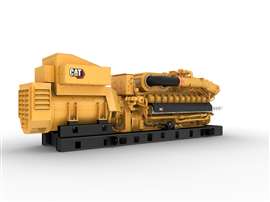 Cat G3520K 20-cylinder natural gas generator set
Cat G3520K 20-cylinder natural gas generator set
The G3500K Series offers a range of improvements over the preceding G3500H. To start, the all-new engine block helps to improve performance and economy. There is also a new turbo with incorporated wastegate to help optimize internal pressure, while a new, larger intercooler can better regulate engine air temperature to achieve higher efficiency and power output.
With an uprated emissions aftertreatment system and the optional combined heat and power (CH&P) system that captures and reuses otherwise lost energy in the form of heat, the gen set can maximize output from each cubic metre of fuel. According to Caterpillar, the new model can achieve an overall electrical efficiency rating of up to 46.5% (CH&P models can reach 89.6% overall efficiency).
“Up until now, a lot of solutions have been used as backup power for data centres,” said George. “But it can take several years for a new data centre to be hooked up to the grid, so now we’re looking at solutions that are a bridge to the grid.”
Power with control
Distributed generation essentially translates to power generated locally for a specific local application, be that a data centre, hospital, or other critical infrastructure, through to construction, mining or agriculture. The generated power can take the place of the grid supply, support the grid supply as required, or as mentioned, act as a ‘bridge’ where power is delivered until a connection to the grid can be completed.
There are other benefits, too. For example, distributed generation can take the place of grid power when prices increase due to high demand, a process known as peak shaving. This can help with determining the customer price per kilowatt hour, which is usually calculated based on the peak price. Avoiding higher peaks using on-site distributed power can then help lower electricity bills.
Where gen sets are usually intended to deliver prime or standby power, distributed generation can take either of these forms. Where a standby generator would only come online in an emergency power outage, such as the blackout across Spain and Portugal, and possibly only be started for validation/testing, Caterpillar puts forward that a distributed network would likely fall somewhere between the two, possibly reaching 3,000 start/stop events each year and around 1,000 hours of operation.
Clearly, such a network will need an advanced control system to manage uptime based on draw and various other factors. For this, Cat has recently unveiled its ECS range of controllers to analyse and manage how power from a scalable distributed generation installation is produced and delivered.
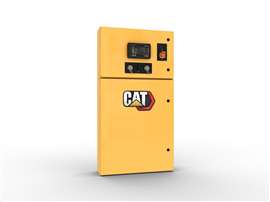 Cat ECS 200
Cat ECS 200
The series starts with the ECS 100, a standby system designed for smaller installations of between one and three gen sets. For cogeneration systems, power balancing and aligning with grid codes there is the ECS 200, a single-asset controller which enables the paralleling of up to 32 gen sets. For more complex applications, including utility breaker control, Cat has introduced the ECS 300. And for full microgrid supervision covering more than five assets, there is the ECS 400.
To give more information about how the controllers work, Vic Williams, commercial manager at Caterpillar, outlined how the system now in place at Cat’s Tucson Proving Ground in the United States has been upgraded to reduce fuel costs and emissions. With additional PV panels and an energy storage system, all of which is managed by an ECS 400, the system has achieved a 33% reduction in fuel consumption and cut maintenance costs by 25% (2023 numbers).
Importantly, it is not absolutely necessary to install a full Caterpillar system from the ground up, with retrofitting and modernisation a key part of the customer relationship. As Williams stated when asked about backwards compatibility with existing hardware and systems: “There is an investigation process to determine if [Cat systems] can work with an existing system from another company.”
Energy storage
As noted earlier, Spain has largely failed to match investment in renewable energy generation with related storage capacity. While unlikely to have been the primary cause of the regional blackout in April, a lack of storage could result in a failure to maintain necessary voltage levels across the grid.
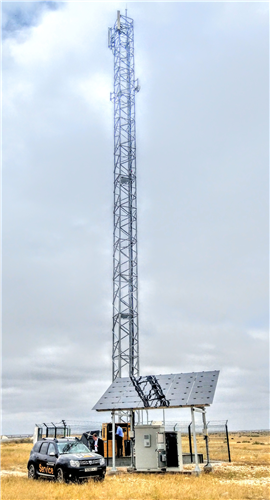 Cat Hybrid Power Solution for telecoms infrastructure
Cat Hybrid Power Solution for telecoms infrastructure
While on a much smaller scale, energy storage is equally important for a microgrid. A battery energy storage system (BESS) can serve a variety of purposes, including storage of energy from renewable sources for when it is required, or delivery of power to the microgrid at peak draw. Further, the units can operate almost silently, while also recharging battery-electric machines.
Cat offers a series of BESS options, ranging from compact models such as the ETS (for telecom applications including mobile phone cell towers) and mobile XES units, through to the mid-size ECE (Energy Capacity Expansion) and ETS (Energy Time Shift) models, and the PGS (Power Grid Stabilization) container units.
Each of these protect against a series of potential power issues, such as system failures, voltage sags/surges and under/over frequency conditions. When used in a hybrid configuration with a gen set(s), the BESS units can reduce fuel consumption or provide the reserve power capacity needed to decrease the transient voltage and frequency dips associated with large electrical loads. This can contribute to lower power bills and OPEX without sacrificing system resiliance.
These BESS units play an integral role in the delivery of bridging solutions, either for temporary power requirements or as a semi-permanent installation. In explaining more about the BESS solutions offered by Cat, Michele Trebbi, Electric Power Energy Systems Engineer, had this to say: “We don’t see the grid as the enemy, but as a partner. We offer bridging solutions so the grid can continue delivering power to existing customers.”
 Cat XES60 compact energy storage system
Cat XES60 compact energy storage system
The BESS units, multiple units of which can be linked to provide greater power capacity, offer one further operational benefit. Stored electrical power, when not required by the microgrid, can be used to process biogas into biomethane or electrolyse water into hydrogen. These fuels can then be used in the related gen set to help further reduce total emissions – to help reduce the overall carbon footprint, the new G3500K Series gas gen set can be fueled with biogas or natural gas combined with up to 25% hydrogen.
POWER SOURCING GUIDE
The trusted reference and buyer’s guide for 83 years
The original “desktop search engine,” guiding nearly 10,000 users in more than 90 countries it is the primary reference for specifications and details on all the components that go into engine systems.
Visit Now
STAY CONNECTED




Receive the information you need when you need it through our world-leading magazines, newsletters and daily briefings.
CONNECT WITH THE TEAM
